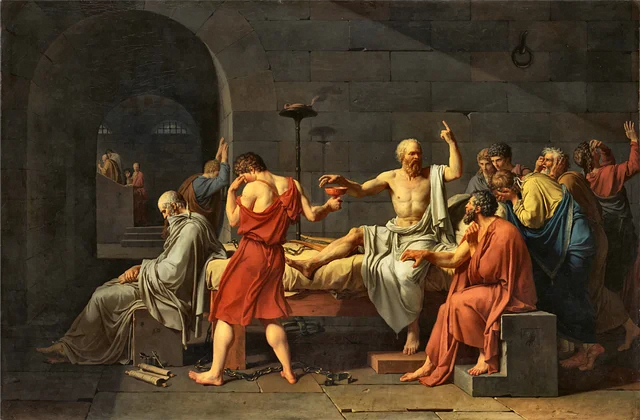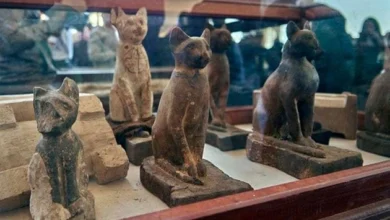What is the most important legacy of ancient Greece (Hellenes)

What was ancient Greece’s legacy? By creating new technologies and building new governance systems such as democracy, architecture, athletics, art, theater, philosophy, science, and mathematics, the ancient Greeks made a lasting imprint on the contemporary world.
Hellas and Ancient Rome were two powerful ancient nations that were quite near to one other, and their boundaries even closed during the Roman invasions. Nonetheless, there were two distinct states, and two distinct universes that were forming. Each followed his own set of rules, and Greek civilization took a somewhat different course than Roman civilization.
After Alexander the Great’s conquests in Greece around the end of the 4th century BC., which substantially enlarged the country’s frontiers, commerce boomed. It has grown fivefold in only a few years. Greece’s frontiers spanned from the Danube in the north to Ethiopia in the south and India and China to the Atlantic coast in the east.
Construction of ships, harbors, ports, and lighthouses were necessary. There has been a significant increase in technological ingenuity in this area. Over the following three centuries, the nation produced as many innovations as it had been unable to do in the preceding 30 centuries.
The writings of the great Archimedes (287-212 BC) emerged around the middle of the third century BC, particularly his theory of the equilibrium of the lever, in which he truly established the framework for theoretical mechanics.
The theory of lifting weights with blocks, pulleys, and screws was devised; concerns about load distribution between supports were defined; and techniques for finding the center of gravity of bodies, which were also credited to Archimedes, were elucidated. On the basis of these ideas and scientific and technological advancements, many innovations have been produced.
The screw pump is said to have been invented by Archimedes.
To protect his hometown of Syracuse from the Romans, he devised and constructed amazing defense systems. According to mythology, this technology was so damaging that the assaulting Romans fled in terror when these weird machines emerged.
The Greek successors to Archimedes, Ctesibius or Ktesibios (about 10O BC.) and Philo from Byzantium (around 180 BC.), recommended replacing the twisted elastic ropes of cannon mounts with metal springs or compressed air. Their plans, however, stayed only on paper since they couldn’t be accomplished with the technology available at the time. The pressure pump, which was used to feed water in fire engines and unique hydraulic equipment, was invented by Ktesibios.
Heron of Alexandria, an ancient Greek scholar who flourished about the 1st century BC., presented a comprehensive exposition of the ancient world’s major accomplishments in applied mechanics and mathematics. He constructed a variety of gadgets and automata, including the theodolite, which is similar to a current vehicle meter for estimating distance traveled by automatically counting the number of rotations of a revolving wheel.
Pumps, a fire engine, and a fire pump, as well as a system for automatically regulating the wick and oil level in lights, were all described by Heron. The wind machine and the simplest steam turbine were two of his most notable creations. However, they turned out to be little more than toys at the time, and they were not deployed in actuality.
Ancient Rome, unlike Greece, did not leave any scientific or technological heritage. Military and construction equipment are likely the only exceptions, despite most of it being inherited from ancient civilizations, particularly the Greeks.
More concepts and ideas were passed down to the Romans than precise technological accomplishments. And did they really need them, since any wealthy Roman citizen was more prepared to spend his money on slaves, which were cheaper than cars?
Nonetheless, machinery, particularly construction machines, was required. For a long time, massive building projects were undertaken in Rome, which was often hampered not by a lack of funds or personnel, but by the technical limitations of construction machinery.
Heavy lifting cranes, trucks, and powerful pile drivers were required, as well as robust and durable construction materials capable of spans of over 40 meters. Let’s not go into detail about the many kinds of building equipment employed by the Romans since it would take too long. Only a few of them are the most critical ones, such as lifting and hydraulic equipment and mechanisms.
Vitruvius includes many sorts of lifting equipment, including blocks, pulleys, capstans, pile driving machines, and so on, in addition to a description of military vehicles. Vitruvius’ sketches, however, have not survived. Images of building machinery and mechanisms depicted by Heron of Alexandria in his “Mechanics” (about 1st century AD) have survived to this day.
All of these machines and systems were powered by the strength of people’s arms, legs, and subsequently, water, and they dominated construction equipment until steam arrived. Their operating premise is the same as it was 2000 years ago.
Three kinds of hydraulic machinery were available to the Romans, at least two of which were taken from the Greeks. This is a pressure pump with a raising wheel and an Archimedes screw. The Archimedes screw is the most widely used of all these devices. It was made consisting of a wooden core, a screw wrapped in copper strips in a spiral, and a wooden cylinder. The overall length of the machine was 11-12 meters, and the angle of inclination to the horizon was 22-45 degrees. A separate grip on the machine’s top-end was used to drive the screw. They could pump water from a tremendous depth by stacking these screws one on top of the other.
In Roman buildings, lifting machinery became commonplace. A huge number of major buildings and constructions were created with their assistance, including Rome’s pride, the Colosseum, the Pantheon concrete, and Trajan’s column, whose marble slabs weighed 50 tons apiece. The Claudius aqueduct required the raising of 560,000 tons of cut stone throughout its construction, which spanned more than 14 kilometers.
Trispastos, a foot crane that works on the basis of a squirrel wheel, is one of the various kinds of hoisting mechanisms available. The Pantheon is said to have been built using a crane with a treadwheel and a tread pile driver.

They probably employed the “ancient” tried and proved Egyptian technique, which Pliny the Elder recalls, to raise stones of extremely huge sizes and masses, such as the drums of columns or architraves.
The stones were raised along an inclined plane produced by sacks packed with dry sand, according to him, while the stones themselves were somewhat higher than their eventual support location. The sand was then gradually poured out of the bags until the boulders were in their intended positions. Cranes, on the other hand, were unquestionably employed as more productive lifting equipment.
Horseshoe-shaped grooves were hewn out on two opposed planes of the stone in one occasion to hoist stones with cranes, through which ropes were placed and connected to the crane hook. In another, through-holes were drilled in the stones through which a lifting rope could be fed, or unique notches were carved onto them so that they could be grabbed with “pincers.”
One of the most labor-intensive processes was delivering stones from quarries to the building site. Drags, carts, and draft animals were used to transport things overland. Their loading and unloading were accomplished using both levers, wedges, and hooks, as well as lifting devices.
Huge marble blocks were brought by sea on specially constructed barges, the majority of which were conveyed to Rome from Egypt. With the assistance of stones put for this purpose, the barges were carried to the loading location half-submerged. These temporarily placed stones were removed when the marble blocks were loaded into the barge, the barge was hoisted, and the cargo was delivered to its destination.




